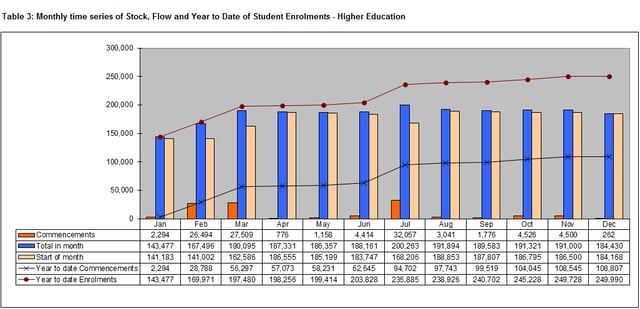Higher education in Australia is important not just for students but also for the economy. The need for high-quality education and helping a student make the right choice is paramount.
A Brief History of Higher Education in Australia
Higher education in Australia refers to university and non-university higher education institutes that award degree or sub-degree qualifications. The three main cycles of higher education are Bachelor, Masters and Doctoral.
In 1901 Commonwealth of Australia was formed. University of Queensland and University of Western Australia were established in 1909 and 1911 respectively. The Commonwealth Higher Education Support Act 2003 sets out three groups of Australian higher education providers: Universities, other self-accrediting higher education institutions and state and territory accredited higher education institutions.

Let's talk about Universities
There are 43 universities in Australia: 40 public universities, two international universities, and one private university.
There are other higher education institutes under different headings as follows:
Group of Eight – the leading research-focused universities.
Australian Technology Network – the leading technology-focused universities.
Innovative Research Universities Australia – research-focused universities.
Universities 21 – a worldwide group of universities founded by the University of Melbourne.
Open Universities Australia – a group of universities that offer distance education courses as part of a common platform.
Regional Universities Network - a group of regional universities.
Sandstone Universities - an unofficial group of Australia's oldest universities.
Australian-European Network/Utrecht Network - a network of 7 Australian universities and 31 European universities who cooperate on student exchange programs.
Association of Commonwealth Universities - represents 535 universities from 37 Commonwealth countries.
It's the Business of Education
Over the past 50 years higher education in Australia has gone through substantial structural and funding changes. In 1974 tuition fees was abolished. In 1986, universities were allowed to charge full fees from overseas students.
The major intake of students is in Feb/July and in November the intake is smaller, as many universities do not run their courses.
The tuition fees for Graduate Certificates and Graduate Diplomas range from AUD$9000 to $16,000 a year. For Postgraduate and Doctoral studies the fee ranges from AUD$11000 to $18500 a year.
The deregularisation of higher education took momentum in 1990 and fees were being charged from Australian students also for doing their post graduation. The Australian Federal Government provides a considerable amount of funding to higher education institutions. Australian higher education providers are usually SAI’s (self-accrediting institutions).
7 Reasons Why Higher Education in Australia Needs to be Reviewed
Higher education follows secondary education. Higher education is also referred to as post-secondary education or third level optional education. It is also made available through college level institutions, including vocational schools, trade schools and career colleges that award professional certifications. Tertiary education is sometimes referred to as further or continuing education as distinct from higher education.
Australia's universities make a strong contribution to Australia's economic prosperity and
social well-being, here's how:
- Universities have more than one million enrolled students.
- Universities employ over 100,000 staff.
- International education is Australia’s largest service export
- Universities are significant contributors to their local communities by providing local employment opportunities, research, industry collaboration, building vital infrastructure and through local community and sporting grants.
- Australia’s regional universities play a vital role in supporting regional economies.
- University research stimulates innovation and delivers solutions to the economic, social and demographic challenges facing the nation.
- The rate of return on publicly-funded research is generally between 20 and 60 per cent.
International enrollments in Higher Ed have also increased from 35,290 students in 1994 to 249,990 in 2014. (More data on the International Education Website).

There are many reasons that Australia also attracts a large number of students from all over the world:
- Education standards are world class.
- Courses are internationally recognized.
- Course fees and living costs are relatively lower than most other developed countries.
- The multi-cultural environment in Australia is inspiring.
People in Higher Ed who want to learn more about the changing face of the education sector should get our new eBook that explains what you can do to stay ahead as the education decision journey for a student moves online.
References:
http://www.slideshare.net/GlobalOpportunities/australian-education?related=4
https://www.universitiesaustralia.edu.au/australias-universities/key-facts-and-data#.VlXZlvkrLIV
https://en.wikipedia.org/wiki/List_of_universities_in_Australia
https://internationaleducation.gov.au/research/International-Student-Data/Documents/INTERNATIONAL%20STUDENT%20DATA/2014/2014%20Time%20Series%20Graph.pdf
http://www.niad.ac.jp/english/overview_og_e.pdf

December 8, 2015

